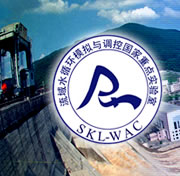河川污染水质模拟系统的建立和悬浮固体负荷评价
作者:Y.C. Lai, Y.T. Tu, C.P. Yang, R.Y. Surampalli, C.M. Kao
刊物:《水文学杂志》,2013年1月,478卷,89-101页
关键词:氨氮(NH3–N);河川污染指标(RPI);河流水质;悬浮固体(SS);流域管理
摘要:高屏溪流域是台湾最大和最广泛使用的流域。其上游流域主要非点源水污染物包括悬浮固体(SS)和氨氮(NH3–N),它们导致高屏溪水质恶化。因为悬浮固体是河川污染指标(RPI)四个计算参数之一,它需要进行仔细的评估,以获得代表性的水质指标。本研究的主要目的是开发一个水质模型系统,以获得具有代表性的悬浮物和水环境质量评价中的河川污染指标。在这项研究中,已经提出河川污染指标的计算和水质模型之间的直接联系。利用在高流量和低流量时实测高屏溪流量数据,得到高评溪河流流速和悬浮固体浓度的相关方程。调查结果表明,悬浮固体浓度与流速具有高度相关性。通过得到的SS方程和RPI计算软件结合WASP模型来提高交互传输,还需要水质模型和河川污染指标计算所得的数据。结果表明,悬浮固体在河川污染指标计算中具有重要作用,同时悬浮固体在河川污染指标的计算中是一个关键因素,尤其是雨季上游流域。这是由于暴风雨后的土壤侵蚀引起的悬浮固体浓度的增加。在雨季,河流流速较高造成径流中NPS污染物(NH3-N,SS)进入河流上游。研究结果表明,利用积分函数可以将河流的流量,水质,污染指数之间建立直接的联系。该综合系统的引入对水质评价及河流管理战略发展的提高具有重要意义。
Development of a water quality modeling system for river pollution index and suspended solid loading evaluation
Authors: Y.C. Lai, Y.T. Tu, C.P. Yang, R.Y. Surampalli, C.M. Kao
Journal: Journal of Hydrology ; Volume 478, 25 January 2013, Pages 89–101
Key words: Ammonia nitrogen (NH3–N); River Pollution Index (RPI); River water quality; Suspended solid (SS); Watershed management
Abstract: The Kaoping River Basin is the largest and most extensively used watershed in Taiwan. In the upper catchment, the non-point source (NPS) pollutants including suspended solid (SS) and ammonia nitrogen (NH3–N) are two major water pollutants causing the deterioration of Kaoping River water quality. Because SS is one of the four parameters involving in the River Pollution Index (RPI) calculation, it needs to be carefully evaluated to obtain the representative water quality index. The main objective of this study was to develop a water quality modeling system to obtain representative SS and RPI values for water quality evaluation. In this study, a direct linkage between the RPI calculation and a water quality model [Water Quality Analysis Simulation Program (WASP)] has been developed. Correlation equations between Kaoping River flow rates and SS concentrations were developed using the field data collected during the high and low flows of the Kaoping River. Investigation results show that the SS concentrations were highly correlated with the flow rates. The obtained SS equation and RPI calculation package were embedded into the WASP model to improve interactive transfers of required data for water quality modeling and RPI calculation. Results indicate that SS played an important role in RPI calculation and SS was a critical factor during the RPI calculation especially for the upper catchment in the wet seasons. This was due to the fact that the soil erosion caused the increase in the SS concentrations after storms. In the wet seasons, higher river flow rates caused the discharges of NPS pollutants (NH3–N and SS) into the upper sections of the river. Results demonstrate that the integral approach could develop a direct linkage among river flow rate, water quality, and pollution index. The introduction of the integrated system showed a significant advance in water quality evaluation and river management strategy development.
原文链接:http://www.sciencedirect.com/science/article/pii/S0022169412010293
翻译:王丽婷;
审核:刘淼

